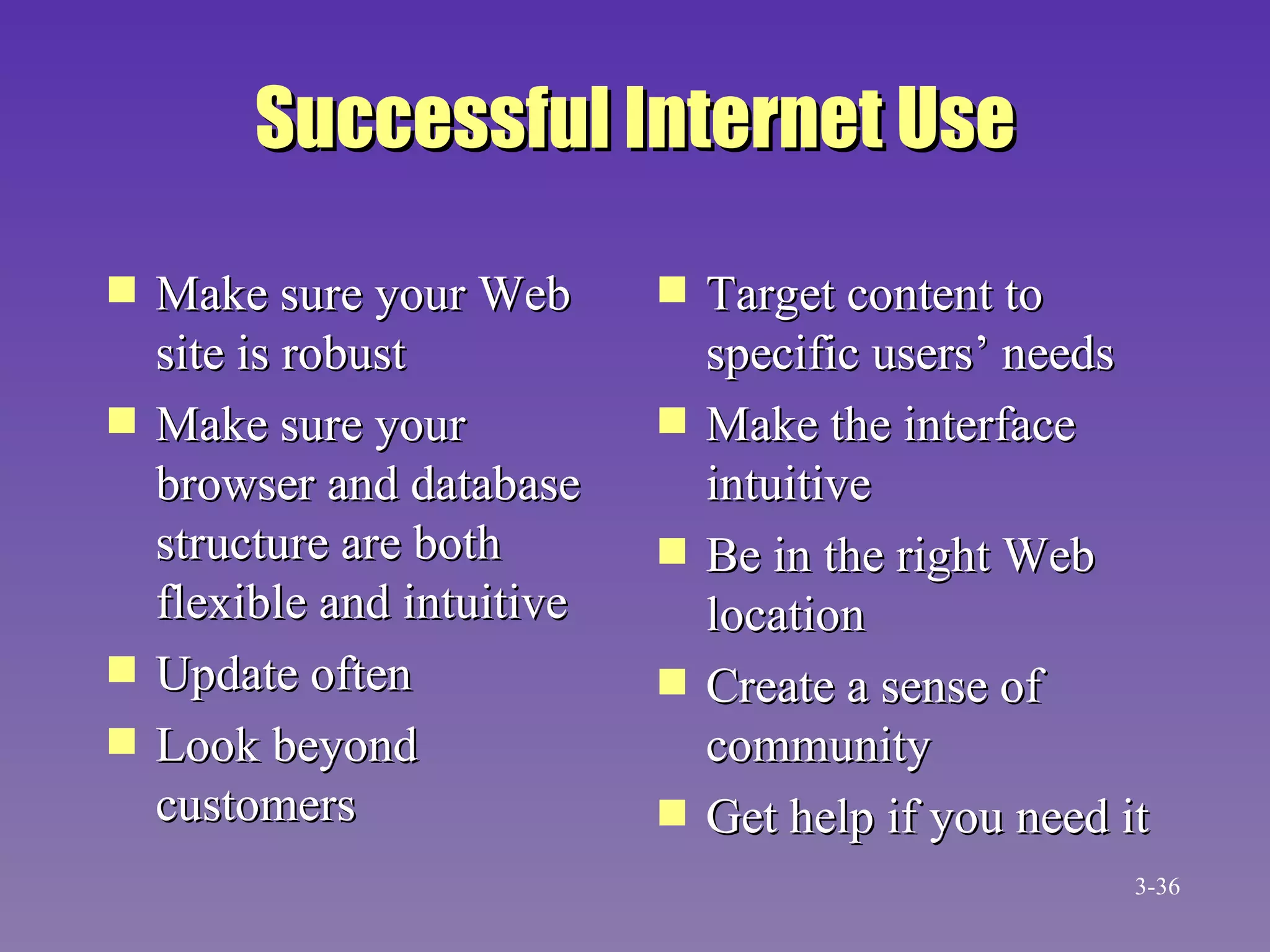This document discusses electronic commerce and the use of information technology. It covers topics like business intelligence, interorganizational systems, electronic data interchange (EDI), the internet, intranets, and applications for e-commerce. Specifically, it outlines the five basic tasks of business intelligence as collecting, evaluating, analyzing, storing, and disseminating data. It also describes three levels of EDI implementation that organizations can adopt and some benefits and challenges of using the internet and intranets for electronic commerce activities.





































![Summary [cont.] Internet Network of networks Security concerns Firewalls Intranets National information infrastructure 3-](https://image.slidesharecdn.com/chap03-100208234609-phpapp01/75/Chap03-38-2048.jpg)